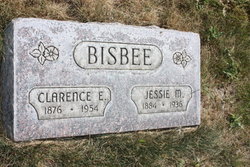Bisbee and his wife, Jessie, built a photo studio in 1914 in downtown Twin Falls. Their slogan for their business was "Life and Art are One," a concept they adhered to very closely. The Bisbees were prosperous for many years; however, as the years progressed, more photographers came into the area and the Bisbees could not keep up. The once affluent couple started to lose everything, and in 1936, Bisbee lost his whole world when Jessie died. He maintained the studio for just a few years more, than officially retired. Clarence Bisbee died in 1954, virtually penniless. After Bisbee died, the glass plate negatives that he used to capture his pictures were sold at the estate auction. A few businessmen from Twin Falls combined their money and bought a number of the negatives. Through a series of donations and deals, the Collection was eventually acquired by the Twin Falls Public Library. Today the negatives are carefully stored and maintained.
In 2002, the Library started a digitization project and scanned 2,450 glass plate negatives. These photos are available on a searchable database in the Library's Idaho and Pacific Northwest History Room. Over the years, the Library has been expanding the Collection, adding other early Magic Valley photographers such as O.A. "Gus" Kelker and Leah Amos, among others. The Collection now boasts over 5,000 photographs.
Bisbee and his wife, Jessie, built a photo studio in 1914 in downtown Twin Falls. Their slogan for their business was "Life and Art are One," a concept they adhered to very closely. The Bisbees were prosperous for many years; however, as the years progressed, more photographers came into the area and the Bisbees could not keep up. The once affluent couple started to lose everything, and in 1936, Bisbee lost his whole world when Jessie died. He maintained the studio for just a few years more, than officially retired. Clarence Bisbee died in 1954, virtually penniless. After Bisbee died, the glass plate negatives that he used to capture his pictures were sold at the estate auction. A few businessmen from Twin Falls combined their money and bought a number of the negatives. Through a series of donations and deals, the Collection was eventually acquired by the Twin Falls Public Library. Today the negatives are carefully stored and maintained.
In 2002, the Library started a digitization project and scanned 2,450 glass plate negatives. These photos are available on a searchable database in the Library's Idaho and Pacific Northwest History Room. Over the years, the Library has been expanding the Collection, adding other early Magic Valley photographers such as O.A. "Gus" Kelker and Leah Amos, among others. The Collection now boasts over 5,000 photographs.
Family Members
Sponsored by Ancestry
Advertisement
Explore more
Sponsored by Ancestry
Advertisement





